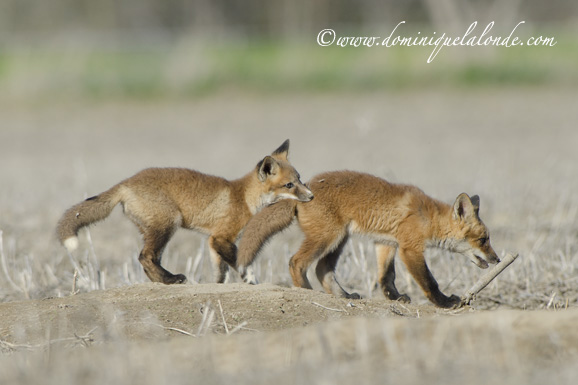The woodchuck constructs two burrows: one for summer and another for winter. The second one is always deep enough to be located below the frost level.
When the time for hibernation is come, the woodchuck seals off the tunnel.
Saturday, September 22, 2012
Sunday, August 26, 2012
Candy-striped Leafhopper ( Graphocephala coccinea)
The Candy-striped Leafhopper is only about three eights of an inch long.
They shoot drops of liquid from their rear ends named honeydew.
Candy-striped Leafhopper feed by sucking on plant juice and they take in a lot of fluid to get the nutrients.
They get rid of the excess by forcibly shooting liquid droplets from their butts.
They shoot drops of liquid from their rear ends named honeydew.
Candy-striped Leafhopper feed by sucking on plant juice and they take in a lot of fluid to get the nutrients.
They get rid of the excess by forcibly shooting liquid droplets from their butts.
Thursday, August 9, 2012
Black Swallowtail (Papilio polyxenes asterius)
Butterflies have four distinct stages in their life cycle :
egg, caterpillar, chrysalis and the butterfly.
The eggs usually are laid singly on the larval host plant.
The caterpillars that hatch from the egg feed on the host plant.
When full grown, the caterpillar sheds its skin and transforms
into a pupa. This is called chrysalis in the case of butterfly.
After 10 to 20 days, the butterfly emerges from the pupal case.
egg, caterpillar, chrysalis and the butterfly.
The eggs usually are laid singly on the larval host plant.
The caterpillars that hatch from the egg feed on the host plant.
When full grown, the caterpillar sheds its skin and transforms
into a pupa. This is called chrysalis in the case of butterfly.
After 10 to 20 days, the butterfly emerges from the pupal case.
Saturday, June 23, 2012
Common Yellowthroat (Geothlypis trichas)
The male birds with few exceptions have no penis. The mating birds cling and may twist about until the two cloaca are brought together and sperm is transferred to the female.
The cloaca is the posterior opening for a bird's digestive, urinary and reproductive tracts that is used to expel feces and lay eggs.
The cloaca is the posterior opening for a bird's digestive, urinary and reproductive tracts that is used to expel feces and lay eggs.
Saturday, June 2, 2012
Red fox (Vulpes vulpes)
Red fox pups spend most of their daylight hours playing near the entrance to their den. As the pups grow older, the parents bring food that is still alive, teaching the young to kill for themselves.
Tuesday, May 15, 2012
Juvenile Great Horned Owl (Bubo virginianus)
Young owls move onto nearby branches at 6 weeks. They are fed for another few weeks as they slowly weaned.
Tuesday, April 17, 2012
Raccoon (Procyon lotor)
The raccoon shelters in woodchuck burrows, hollow trees or rock crevices.
The babies are raised by their mother. As soon as the young raccoons are strong enough to follow her, the mother takes them to the ponds and streamsides to hunt for food.
The babies are raised by their mother. As soon as the young raccoons are strong enough to follow her, the mother takes them to the ponds and streamsides to hunt for food.
Saturday, March 31, 2012
Thursday, February 16, 2012
Wildlife Documentary
Welcome to my new wildlife documentary to share, learn and understand
the cycles of nature.
Episode 1 - Owls
Discover their habitats, their diets and their behaviors.
Click here to see bigger
the cycles of nature.
Episode 1 - Owls
Discover their habitats, their diets and their behaviors.
Click here to see bigger
Subscribe to:
Posts (Atom)



















